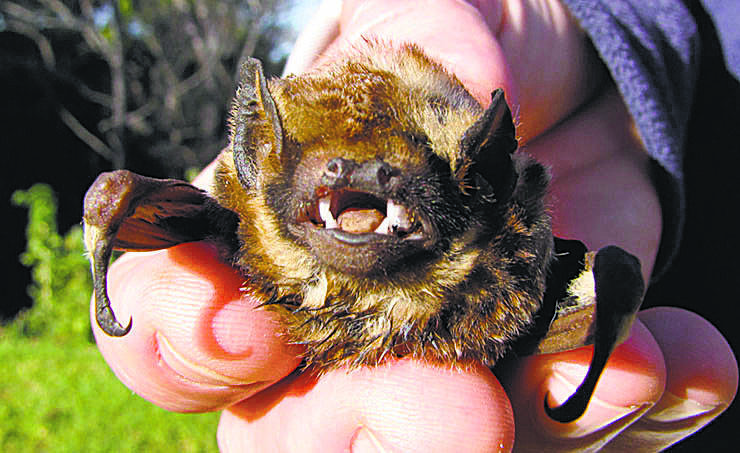Editorial: Protect the endangered Hawaiian hoary bat

COURTESY DLNR / 2016
Three wind energy projects on Maui and Oahu have reported higher-than-anticipated “incidental takes,” or accidental killings, of the endangered Hawaiian hoary bats.
The endangered Hawaiian hoary bat (opeapea), the state’s only native terrestrial mammal, is a tiny thing. It has a wingspan of about one foot and brown and black hairs frosted with white at the tips. It feeds on night-flying insects like moths and termites, using echolocation to find its prey.
Unfortunately, bats and giant wind turbine blades tend to occupy the same space, with fatal results. Three wind energy projects on Maui and Oahu have reported higher-than-anticipated “incidental takes,” or accidental killings, of the bats.
This is nothing new; the incompatibility of bats and wind turbines is well established. In fact, there’s even a national organization — the Bat and Wind Energy Cooperative — formed in 2003 to address this problem.
But what’s to be done? One solution is simply to allow the projects to kill more bats, something they’ve requested. For instance, Kawailoa Wind Power on Oahu’s North Shore wants to increase its allowed take from 60 bats to a whopping 265. That’s a lot of bats, especially since they are endangered.
So it’s encouraging that Kawailoa Wind is trying something else: An ultrasonic deterrent system that interferes with the bats’ echolocation calls by emitting its own ultrasonic sounds. It’s hoped the devices, mounted on the turbines, will discourage bats from entering the airspace around the blades. If it works, wind energy companies may be able to reduce or eliminate their use of the third option — curtailing the rotation of turbine blades on nights with low wind. But even generating a little less wind energy would be preferable to the status quo.



